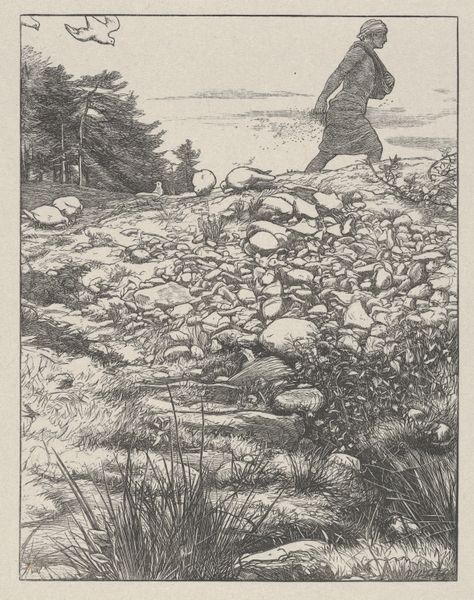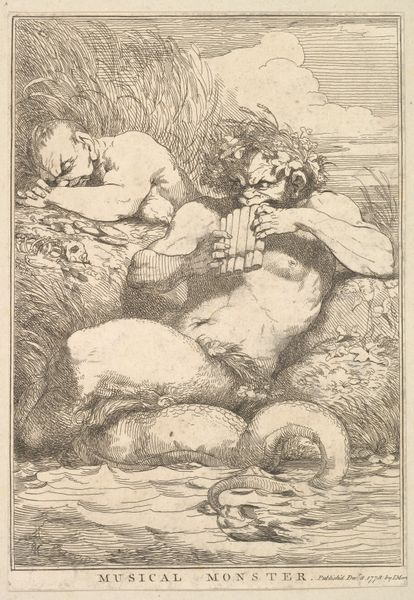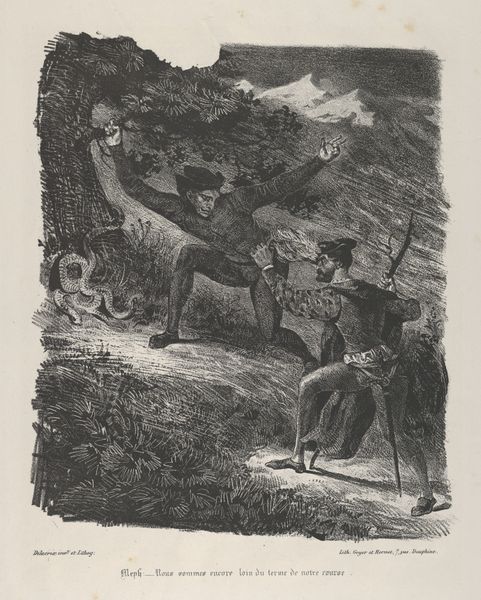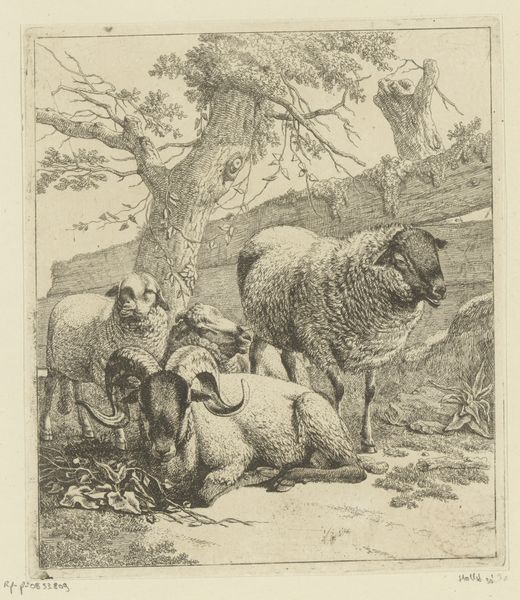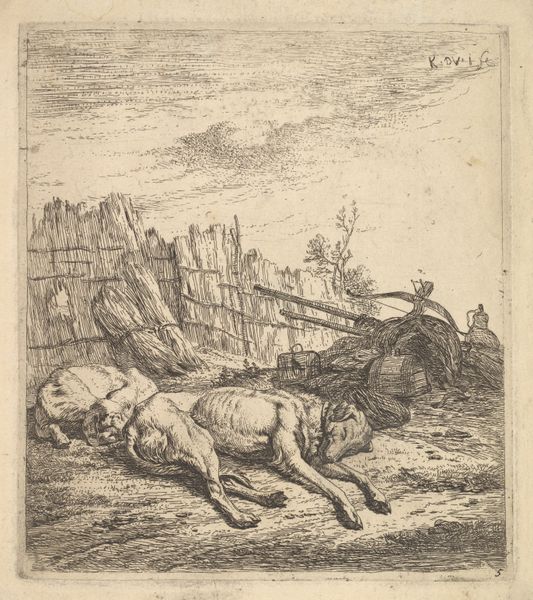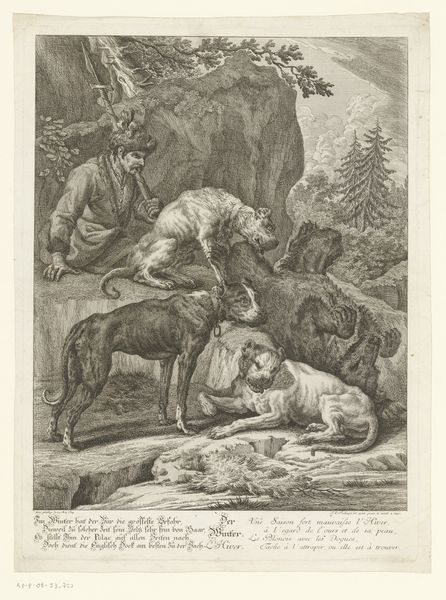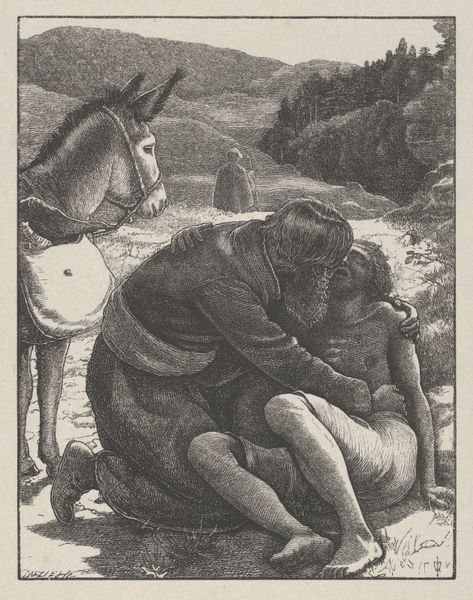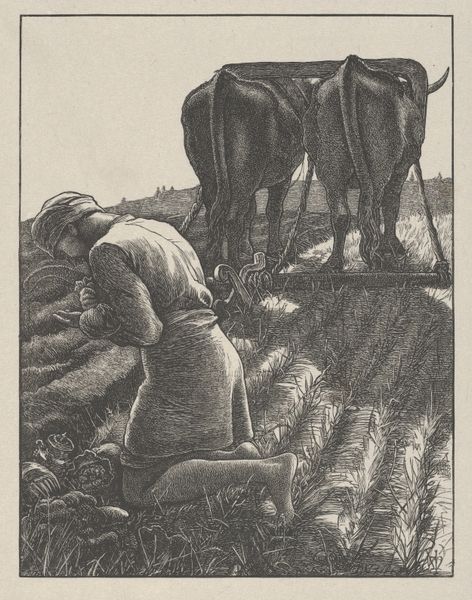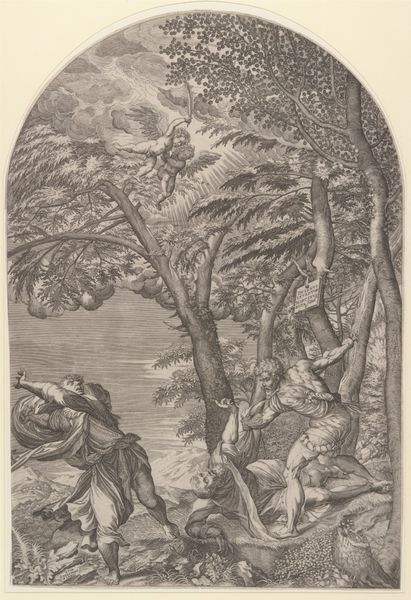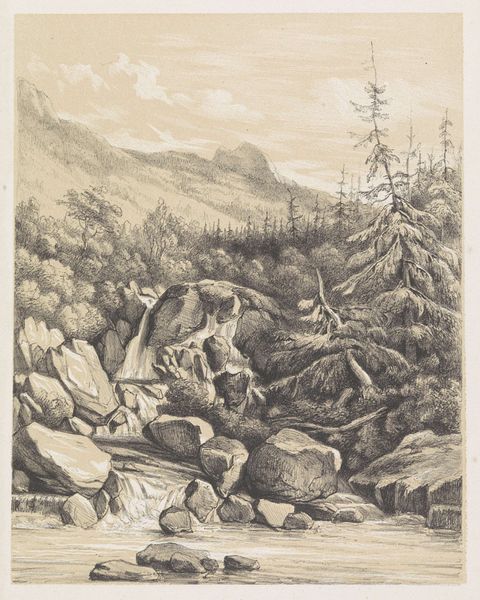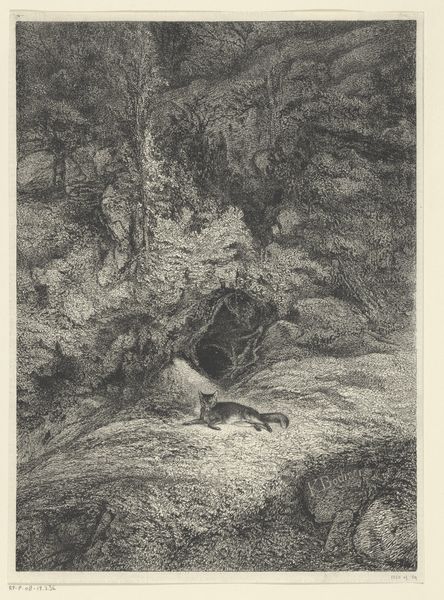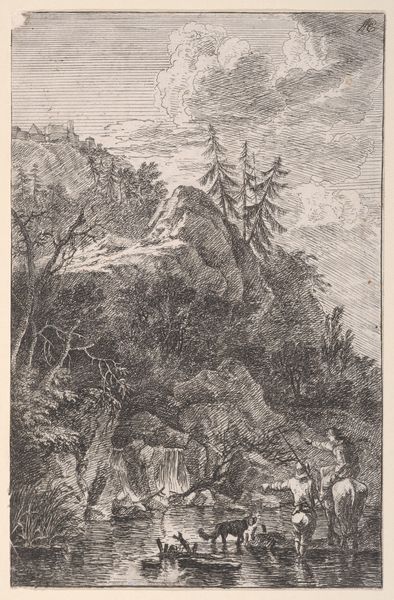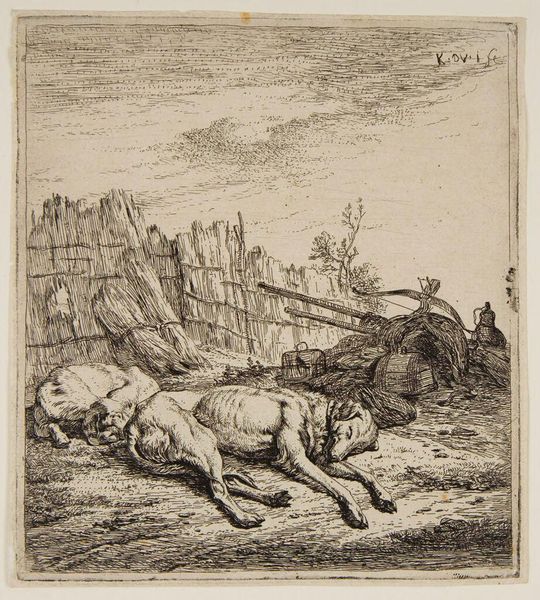
The Good Shepherd (The Parables of Our Lord and Saviour Jesus Christ) 1864
0:00
0:00
Dimensions: image: 5 1/2 x 4 5/16 in. (13.9 x 10.9 cm) sheet: 7 5/16 x 6 1/16 in. (18.6 x 15.4 cm)
Copyright: Public Domain
Curator: This engraving by Sir John Everett Millais, completed in 1864, is titled "The Good Shepherd" from "The Parables of Our Lord and Savior Jesus Christ." Editor: It's a scene of stark contrast – violence and pastoral tranquility intermixed. There’s something immediately arresting in the sheer vulnerability displayed. Curator: Observe how Millais orchestrates our visual pathway through compositional arrangement and tone. Note how the foreground action is framed and separated by the artist from the upper section of the print, a clear division. Editor: The iconography is fairly straightforward: the dead sheep obviously signify sacrifice, while the shepherd's lifeless pose hints at the ultimate sacrifice—Christ's protection. The lion head watching on the horizon—predatory threat is always looming. Curator: Precisely! The symbolism interlocks formally with Millais’ masterful technique, notably the employment of the dense hatching and cross-hatching techniques used here, thus articulating a complex tonal gradation despite it's absence of color. This heightens the drama, wouldn't you agree? Editor: Absolutely, the starkness serves the narrative well. Notice also the thistle—the ancient emblem of Scotland, an invocation to protect your own land against the invaders. Curator: A compelling detail. Also relevant is the historical context, since this period saw heightened debates on faith and industrialization, the imagery perhaps acts as an allegory that reinforces traditional spiritual values. Editor: These layered symbols provide much depth! Millais truly was communicating complex religious ideas by layering symbols of his homeland with established motifs from Christian ideology, while giving great consideration to composition. Curator: In essence, Millais demonstrates his artistic sophistication by how formal technique elevates this theological visual argument to greater, enduring relevance. Editor: Indeed, considering the history and visual dynamics illuminates not only its artistry but the cultural currents of its time.
Comments
No comments
Be the first to comment and join the conversation on the ultimate creative platform.
